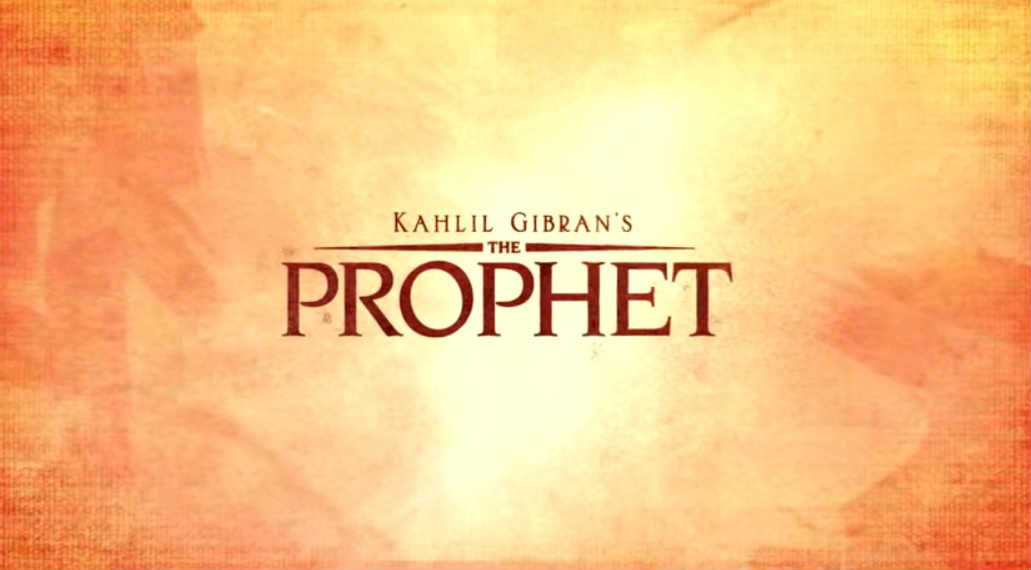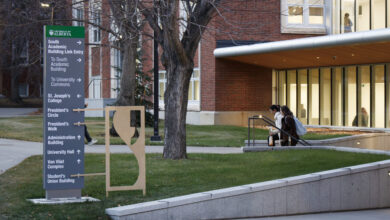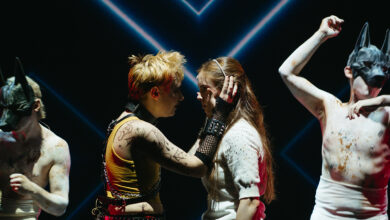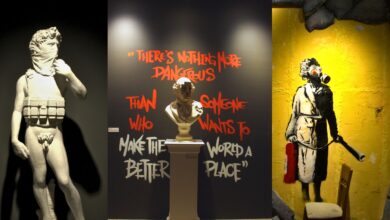Movie Review: The Prophet
 Supplied
SuppliedThe Prophet
Directed by Roger Allers
Written by Roger Allers (screenplay) and Kahlil Gibran (novel)
Starring Liam Neeson, Salma Hayek and Quvenzhane Wallis
Playing at Metro Cinema, Friday, Sept 4 until Thursday, Sept 17
$9 for students (metrocinema.org)
Kahlil Gibran published The Prophet novel in 1923 in America. The film follows the narrative of the novel, but takes gorgeous artistic interludes to highlight the novel’s poetic elements.
The Prophet follows Almitra (Quvenzhané Wallis) and her mother (Salma Hayek) in their interactions with poet Mustafa (Liam Neeson), who has just been released from a house arrest that spanned seven years. Mustafa’s poetry has been accused of being treasonous, so the government has kept him away from the general populous to avoid inciting riots. The story follows the characters as two guards (voiced by Alfred Molina and John Krasinski) release Mustafa from his prison and to a boat to take him back to his home country.
The animation in The Prophet is beautiful. The film is hand drawn, a nice break from the CGI-infested animation world that we currently live in. The most intriguing part of the film is the varying art styles. We see one consistent style for the main plotline and character development, but it’s the poetic interludes that really take the visual art to a new level. When Mustafa recites his poetry to the people of Lebanon, the film comes away from the main story, and an artist’s representation of Gibran’s poetry takes over the visual narrative. Each poem has a different art style, ranging from watercolour to impressionist paintings. Each art scene is highly symbolic, mostly using birds as symbols of freedom, and breaks up the storyline nicely. The artistic interludes, while jarring at first, end up fitting well with the storyline and generally don’t feel like they were inserted as an afterthought.
The art segments are beautiful, and give a more interesting experience of the poetry, mostly recited by Neeson’s Mustafa. However, the art seems to mainly function as a way to liven up the monotony of Gibran’s work. By the fourth poem, it becomes clear that they all follow an almost identical form, which would have definitely become monotonous if the art styles had not been so compelling for each reading.
The Prophet is a beautiful depiction of Lebanese culture. When we aren’t seeing beautiful landscapes and cityscapes in Almitra and Mustafa’s travels, the poetry-art scenes show more in-depth aspects of Lebanon, from a gorgeous watercolour farming scene to breathtaking shots of old, traditional architecture.
While the cultural representation is beautiful, the film manages to detract from it in a few of the poetry readings. There are two scenes where, for some reason, instead of being recited by Neeson, folk-music heavyweights Damian Rice, Glen Hansard and Lisa Hannigan have adapted the poems into songs. While the tracks are beautiful, they seem out of place in the context of the film. Western-celebrity aside, the folk tracks have nothing to do with Lebanese culture other than the fact that they are singing Gibran over Americana-style instrumentals. Choosing a more culturally relevant performer for these tracks would have been more effective, but that could also be said for the voice actors.
Questionable cultural choices aside, the films adaptation of Kahlil Gibran’s novel is a visual marvel. It’s a work of art in itself, and functions as an excellent companion to the original novel.




